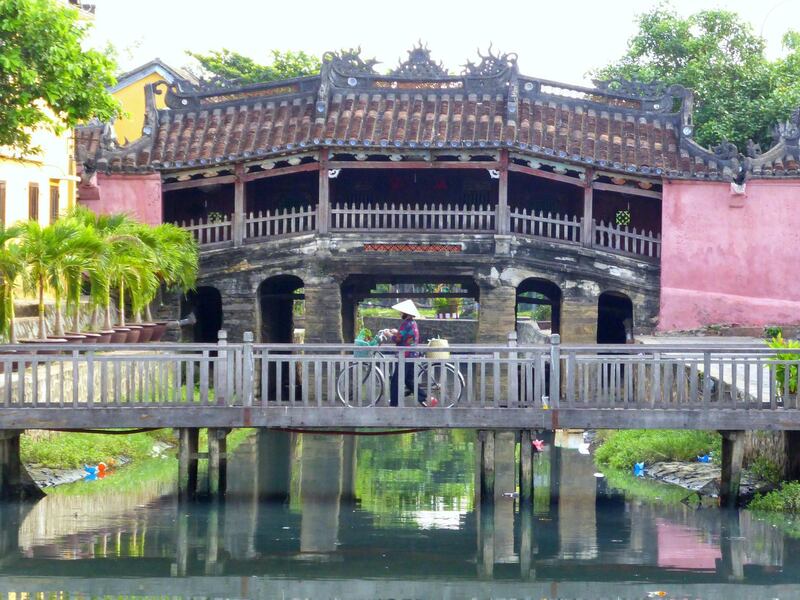Why Hoi An?
The trading port-turned-fishing town of Hoi An in central Vietnam, known as "Vietnam's Venice" because of its network of canals) was called Faifo in the past when it was the main port of the powerful Cham Kingdom, which controlled the spice trade with Indonesia. It later became a hub of commercial activity when Chinese and Japanese traders made this their home for several months, trading in porcelain and spices, and they left their lasting impact on this town.
In the late 19th century, the river that linked Hoi An with the sea was silted up, and the town lost its importance as a trading centre. Today, the car-free lanes of the Old Town, lit with lanterns, are lined with more than 800 buildings which are well-preserved (and luckily escaped damage during the Vietnam War) consisting of French colonial houses, Chinese assembly rooms, pagodas and shop houses. This has earned it a place on Unesco's World Heritage List. Hoi An also has another laurel to its credit – more than 150 tailors who can replicate virtually anything you give them.
A comfortable bed
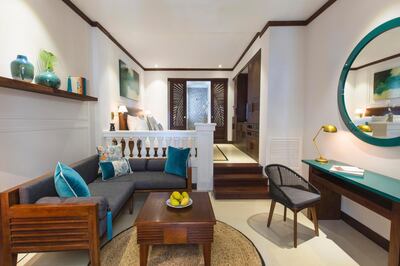
One of the most charming and luxurious options is Anantara Hoi An with lush gardens fronting the Thu Bon River. It has attractive rooms and suites with split-level living areas, both a bistro and restaurant serving everything from pizzas to Vietnamese specialities. Doubles start at about Dh720 per night, including breakfast (www.anantara.com/en/hoi-an).
Another luxurious option is Hoi An Silk Marina Resort and Spa. With air-conditioned villas decorated in a fusion of European and Asian style, this waterfront property with a spa and wellness centre has a central location. Doubles start at about Dh560, including breakfast (www.hoiansilkmarina.com).
A great option is also the boutique Allegro Hoi An belonging to the Little Hoi An group, just a 10-minute walk from Old Town, with an outdoor pool and luxury spa. Well-appointed suites start at about Dh500 per night, including breakfast (www.littlehoiangroup.com).
Find your feet
To enter most of the main attractions in the Old Town you need a ticket, which is sold at various kiosks in the area. Start at the pink Japanese Covered Bridge with its pagoda roof – where two dogs and two monkeys stand sentinel. This was built in the 1590s by the Japanese community to link it with the Chinatown on the other side, and is a symbol of the town's sense of inclusiveness. On the northern end of the bridge is a temple dedicated to the god of weather where the locals pray to escape impending earthquakes.
Cross the bridge into Old Town with its low-tiled roof houses and ancient wells. Visit the colourful Fujian Chinese Assembly Hall, with bright pink incense coils hanging from the ceiling. It began as an assembly hall for the Chinese merchants and later became a temple for the worship of a seafarer's deity.
There's also the Museum of Trade Ceramics (80 Tran Phu Street), where pieces from archaeological digs in the area are showcased – have a look at beauties from India, Japan, China and even the Middle East. Finish at the Museum of History and Culture (7 Nguyen Hue Street) with old black-and-white photos of Hoi An, ancient bricks and tiles, and 2,000-year-old pots from the Sa Huynh period.
Your walk can come to an end at the Thu Bon riverside, where there are plenty of pretty cafes to rest your legs while sipping a Vietnamese coffee made with condensed milk.
Meet the locals
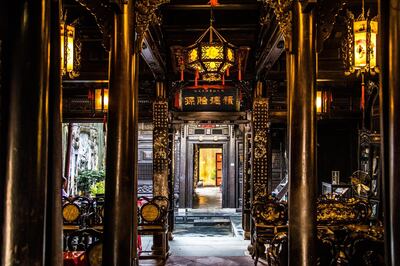
Hoi An has many well-preserved ancient homes, that tourists can visit with a ticket issued by the local tourism office. One of the most atmospheric is the lovingly preserved Tan Ky house, a merchant home with both Japanese and Chinese influences. Explore it with a guide – look at Chinese poems inlaid in mother-of-pearl, high ceilings with beams and an open-to-sky courtyard.
At sunset, take a boat ride down the Thu Bon river, where locals release flame lanterns each night.
Book a table
Have a dinner at Lantern Town restaurant decorated with local artworks and hand-painted silk lanterns; try the Hoi An sample plate, which is great for tasting popular Vietnamese appetisers in one go. An order of the speciality mi quang noodles with claypot fish would be wise, then finish off with a passion fruit tart. A meal for two costs about Dh55.
Another favourite is the Morning Glory Restaurant in a refurbished colonial building which serves central Vietnamese cuisine with good options for vegetarians, too. The restaurant has an open kitchen and a breezy terrace that overlooks Old Town. Try its crunchy tofu coated in young sticky rice, and the local signature dish- cao lu – yellow noodles with simmered BBQ meat and fresh herbs and spices with veggies. A meal for two costs around Dh47; 106 Nguyen Thai Hoc – Phuong Minh.
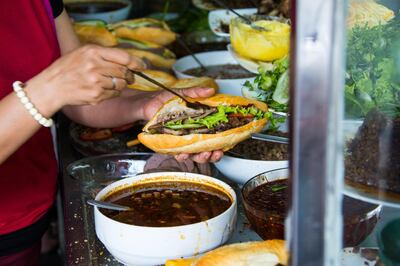
Don’t forget to catch the popular Vietnamese street sandwich – banh mi at the famous little eatery Banh Mi Phuong, a restaurant that Anthony Bourdain, American celebrity chef, author, travel documentarian, and television personality, who died in June, once frequented. It has 12 varieties of the stuffed baguette, including a chicken rendition. The restaurant is located on 2B Phan Chau Trinh Street, and one of its banh mi sandwiches costs about Dh4.
Don’t miss
The town is famous for its culinary traditions and cookery schools. One of the most famous is Red Bridge Restaurant and Cooking school, where you can learn to make grilled fish in banana leaves or crispy pancakes rolled with herbs. Many of these classes start with a visit to the local market (www.visithoian.com/redbridge) to shop for the ingredients.
Relax and unwind with a massage at Ginger spa, which combines ancient Vietnamese herbal treatments and healing steam baths with traditional massages (www.gingerspahoian.com.vn).
Take a day trip to Vietnam’s Angkor Wat – the My Son ruins, a complex of abandoned Hindu temples dating back to the fourth century.
Shoppers’ paradise
Hoi An is famous for its tailoring shops, and most places can put together an outfit in 12 hours or less and even deliver to your doorstep.
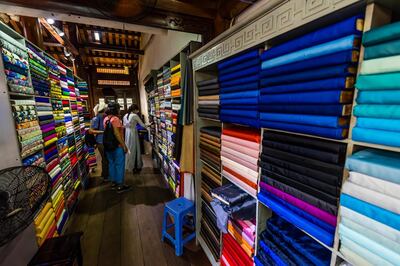
There are also footwear shops that can make matching shoes or slippers. Take along photos of old favourites to copy – choose a pattern and then the fabric, and wait for the tailoring. A good classy establishment is Yaly Couture with a great selection of fabrics too (358 Nguyen Duy Hieu, Cam Châu, +84 235 3914 995).
Another trusted shop is BebeTailor, which has many branches around town (www.bebetailor.com). The town also has many vibrant art galleries filled with paintings and work by talented local artists. Xu Dang Trong (9 Nguyen Thái Hoc, Phuong Minh An) is a great place to shop for arts and crafts created by local artists and also handmade furniture.
Choose from lacquer panels, oil paintings and paintings on silk and you can even have it shipped. Browse the stalls at the night market, where you can buy silk lanterns and souvenirs at bargain prices.
What to avoid
Travelling in the wet season from late October to first week of December when the Old Town is in risk of flooding. Avoid the touristy, crowded Cua Dai Beach.
Getting there
Emirates (www.emirates.com) flies from Dubai to Ho Chi Minh City or Hanoi, with a connecting flight to Da Nang from about Dh2,585 return. From Da Nang, hire a taxi to Hoi An. It takes under an hour to get there.
_________________
Read more:
Going with the flow on a private cruise down the mighty Mekong River
The dying icon of Vietnam: why the conical hat is struggling for survival
